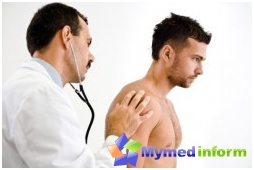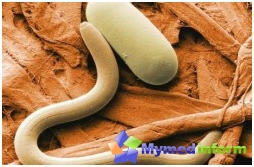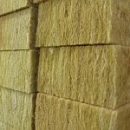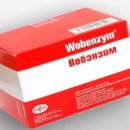Overview of the disease

Abbreviated bronchiectatic disease is called three letters - Bab. Modified broncht pulmonologists are called bronchiectasis or bronchootasia. Bronchoetatic disease annually detects approximately 0.5-1.5% of residents. Its development takes place mainly in children and young people, that is, in the age category from 5 to 25 years. In the mature age, the development of bronchidectasis is more susceptible to those who live in the cold, wet regions work in harmful production, as well as smokers. During the disease, recurrences (repeats) of bronchophole infections are constantly observed. His indispensable «satellite» - cough With mocroid. Modified bronchi can be in the same segment or in one share of the lung. More severe option - extensive distribution. The process can be one-sided or double-sided (localization specifically indicated by segments). Several forms of Bab:
- Light - exacerbations happen once or twice a year. In the period of resistant remission, people feel quite healthy and efficient.
- Pronounced - exacerbations repeated every season, they are more prolonged. Per day can be separated by purulent sputum in an amount of from 50 to 200 milliliters. And even when the disease temporarily retreats, a patient has a moderate shortness of breath, periodic cough, its working capacity is reduced.
- Severe - exacerbations are frequent, long, with an increase Temperature Body. Wet is often with a grinding smell. Remissions are short.
- Complicated - It is characterized by the attachment of such complications such as cardiovascular insufficiency, jade, kidney amyloidosis, liver, lightweight heart, light bleeding, anemia, Empiama pleura.
Other criteria for which Bab is classified:
- in the time of occurrence - innate or acquired;
- According to the structure of bronchiectase, it can be facing, spindle-like (varicose), cylindrical or mixed;
- On clinical flow, such three (or four) stages are distinguished: bronchitic, pronounced manifestations, complications (not in all ill) and the period of attenuation of the disease.
Why does bronchiectatic disease occur?

First, with the help of tools, the doctor conducts percussion and auscultation.
With percussion (analysis of sound phenomena when tapping), the doctor will notice the blur of the percussion sound or tympanite (bloating associated with the accumulation of gases).
With auscultation (listening to sounds during organs), wet wipes and hard breath are found.
Common blood testing will show that leukocytes are increased, erythrocyte sedimentation speed is accelerated.
Next, the sputum is examined, sowing is done to identify the causative agent of infection. Smears allow you to explore the composition.
Chest X-ray. Usually it shows that bronchi expanded.
Bronchography (a contrast agent for X-ray) - this study allows you to determine the extension form and place where it is.
Bronchoscopy - allows with the help of an endoscope equipped with a special chamber, inspect the bronchial tree.
Computer tomography - helps the doctor clarify the localization of the pathological process, the size of the expansion of bronchiectasis.
Spirometry and picofloumometry - allow you to determine the degree of respiratory failure.
Recommendations for treatment
Pulmonologists can use two ways to combat the disease: conservative and operational.
During the exacerbation of the BEB, all efforts are sent to the Bronchi Sanation, the suppression of the foci of the purulent inflammatory process in them. Most often, pulmonologists are appointed in Vienna, Muscle or Endobronchial:
- Amoxiclav, Augmentin;
- Ceftriaxone, Cefotaxim, Cefazolin;
- Moxifloxacin, Levofloxacin, Gatifloxacin.

Before choosing Antibiotic It is necessary to conduct studies showing what drugs is sensitive to infection.
To prevent the growth of fungal flora, with long-term use of antibiotics, antifungal agents are prescribed (for example, fluconazole).
Multic tools are shown in patients to improve the destruction of sputum. For these purposes use ACS, Fluimucil, Ambroxol (Lazolyvan), Perstissin.
To facilitate breathing when blindfolded with mucus and pus bronchops, bronchorants are prescribed (Ventoline, Atrovant)
After the study of immunograms, the doctor may prescribe immunostimulating drugs. Preference is given to funds, as part of which Echinacea is, it is possible to appoint Timus preparations, human immunoglobulin.
If the course of the disease is severe, glucocorticosteroids will be prescribed (usually prednisone).
At high temperatures it is possible to use NSAIDs (for example, Paracetamola, Bruphen, Nurofen).
The benefit can bring:
- Alkaline drinking;
- breathing exercises;
- infusion therapy (Reopolyglyukin, sorbilact, reosorbilact);
- Ultrasonic replacement;
- therapeutic bronchoscopy (removal of purulent clusters, washing the bronchi, administration directly into the bronchial wood of medicines);
- Bronchoalveolar lavage (the procedure for washing the bronchi);
- Electrophoresis;
- Position drainage (wets better comes out if a person is in a certain position, it depends on where bronchiectases are localized);
- usage Nebulizers (ultrasound or compression, which are modern inhalers);
- Massage of the chest zone (vibratory).
The following folk remedies may contribute to the disheve of the respiratory tract of sputum:
- It is necessary to squeeze the juice from the root of the black radish and mix with the honey (to take it as much as the radish juice). Take a mixture made three times a day on a tablespoon.
- Squeeze juice. You need to eat it six times a day on a tablespoon.
- From the leaves of the plantain or aloe squeeze. Then mix it with the same number of lime (or acacia) honey. Dosage: three times a day on a teaspoon.
- Add a teaspoon Barcuch fat in 100 ml of milk (warm) and drink.
- Before bedtime, instead of a cup of tea, make yourself infusion from Icelandic Moss.
- Can help medicinal infraces and ragners from the roots of ninewood, leaf and stepmother, kidney pine, riffling, herbs, vigor.
If hemochkami appeared, then you can brew yarrow, a hustlese bird, nettle, a shepherd bag.
As an immunostimulating and vitaminizing agent, make a drink from rosehip fruits in a thermos.
Essential in improving the patient's condition plays. It is desirable that it is a variety of, full, with a large number of vitamins and proteins. In the diet should be attended: fish, meat dishes, buckwheat, eggs, cottage cheese, figs, other fruits, vegetables, fruits, juices, berries for the season.
Operational intervention is resorted to any severity of the course of illness (if there are no contraindications), the patient's age should not exceed 40 years. If the patient is older, then the operation proceed if there are complications threatening life. The specialist removes the affected share of the lung or segment. The main thing is that the remaining bronchi can provide the breathing process in full.
Possible complications

In severe cases there is probability:
- respiratory failure;
- Empiama pleura;
- bronchopneumonia;
- pleurite;
- Light bleeding;
- Blood infection (sepsis).
To avoid bronchiectatic disease, try to treat the virus or infectious pathologies of the respiratory tract. Strengthen your immunity, warm dress in cold seasons. Reduce the number of BEB recurrences helps sanatorium resort treatment.









